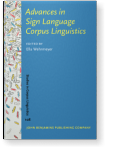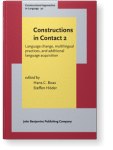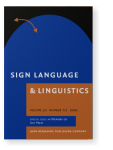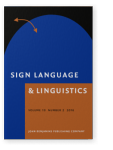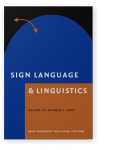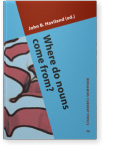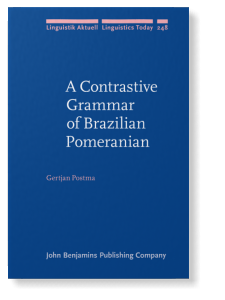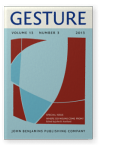Ryan Lepic
List of John Benjamins publications for which Ryan Lepic plays a role.
2023 Chapter 11. W(h)ither the ASL corpus? Considering trends in signed corpus development Advances in Sign Language Corpus Linguistics, Wehrmeyer, Ella (ed.), pp. 287–308 | Chapter
In this chapter, we discuss logistic and ideological practices used by signed language corpus projects around the world to develop their corpora, starting with Johnston’s early call to develop signed language corpora in 2004. We then outline a brief history of existing American Sign Language… read more
2021 From letters to families: Initialized signs in American Sign Language Constructions in Contact 2: Language change, multilingual practices, and additional language acquisition, Boas, Hans C. and Steffen Höder (eds.), pp. 267–305 | Chapter
This study analyzes a database of initialized signs, which are formed with handshapes corresponding to English letters, collected from an ASL dictionary. ASL handshapes are classified as either primarily used for initialization, such as the R handshape, or rarely used for initialization, such as… read more
2020 Spatial metaphors in antonym pairs across sign languages Special Issue in Memory of Irit Meir, Lillo-Martin, Diane, Wendy Sandler, Marie Coppola and Rose Stamp (eds.), pp. 112–141 | Article
We analyze sign locations in 776 signs from 16 antonym pairs across 27 sign languages to examine metaphorical mappings of emotional valence (positive vs. negative) along different spatial axes. We conduct both an automatic and a manual analysis of sign location and movement direction, to… read more
2020 Review of Shaw (2019): Gesture in multiparty interaction Special Issue in Memory of Irit Meir, Lillo-Martin, Diane, Wendy Sandler, Marie Coppola and Rose Stamp (eds.), pp. 272–279 | Review
2016 Articulatory plurality is a property of lexical plurals in sign language Lexical plurals and beyond, Lauwers, Peter and Marie Lammert (eds.), pp. 391–407 | Article
Sign languages make use of paired articulators (the two hands), hence manual signs may be either one- or two-handed. Although two-handedness has previously been regarded a purely formal feature, studies have argued morphologically two-handed forms are associated with some types of inflectional… read more
2016 Motivation in morphology: Lexical patterns in ASL and English Sign Language & Linguistics 19:2, pp. 285–291 | Article
2016 Taking meaning in hand: Iconic motivations in two-handed signs Sign Language & Linguistics 19:1, pp. 37–81 | Article
Traditionally in sign language research, the issue of whether a lexical sign is articulated with one hand or two has been treated as a strictly phonological matter. We argue that accounting for two-handed signs also requires considering meaning as a motivating factor. We report results from a… read more
2015 Patterned iconicity in sign language lexicons Where do nouns come from?, Haviland, John B. (ed.), pp. 43–63 | Article
Iconicity is an acknowledged property of both gesture and sign language. In contrast to the familiar definition of iconicity as a correspondence between individual forms and their referents, we explore iconicity as a shared property among groups of signs, in what we call patterned iconicity. In… read more
2014 Commentary on Kita, van Gijn & van der Hulst (1998) Sign Language & Linguistics 17:2, pp. 241–250 | Article
2013 Patterned iconicity in sign language lexicons Where do nouns come from?, Haviland, John B. (ed.), pp. 287–308 | Article
Iconicity is an acknowledged property of both gesture and sign language. In contrast to the familiar definition of iconicity as a correspondence between individual forms and their referents, we explore iconicity as a shared property among groups of signs, in what we call patterned iconicity. In… read more
